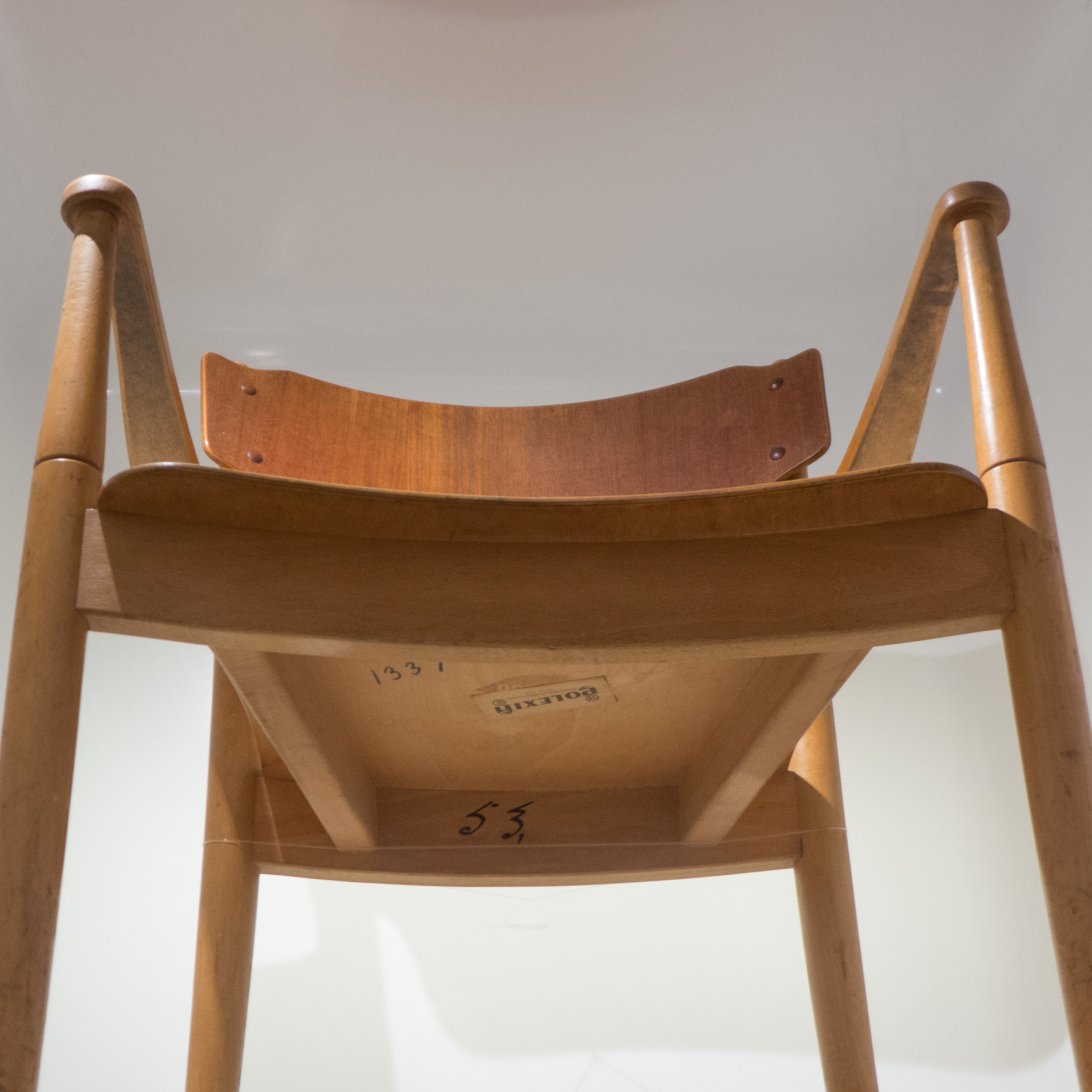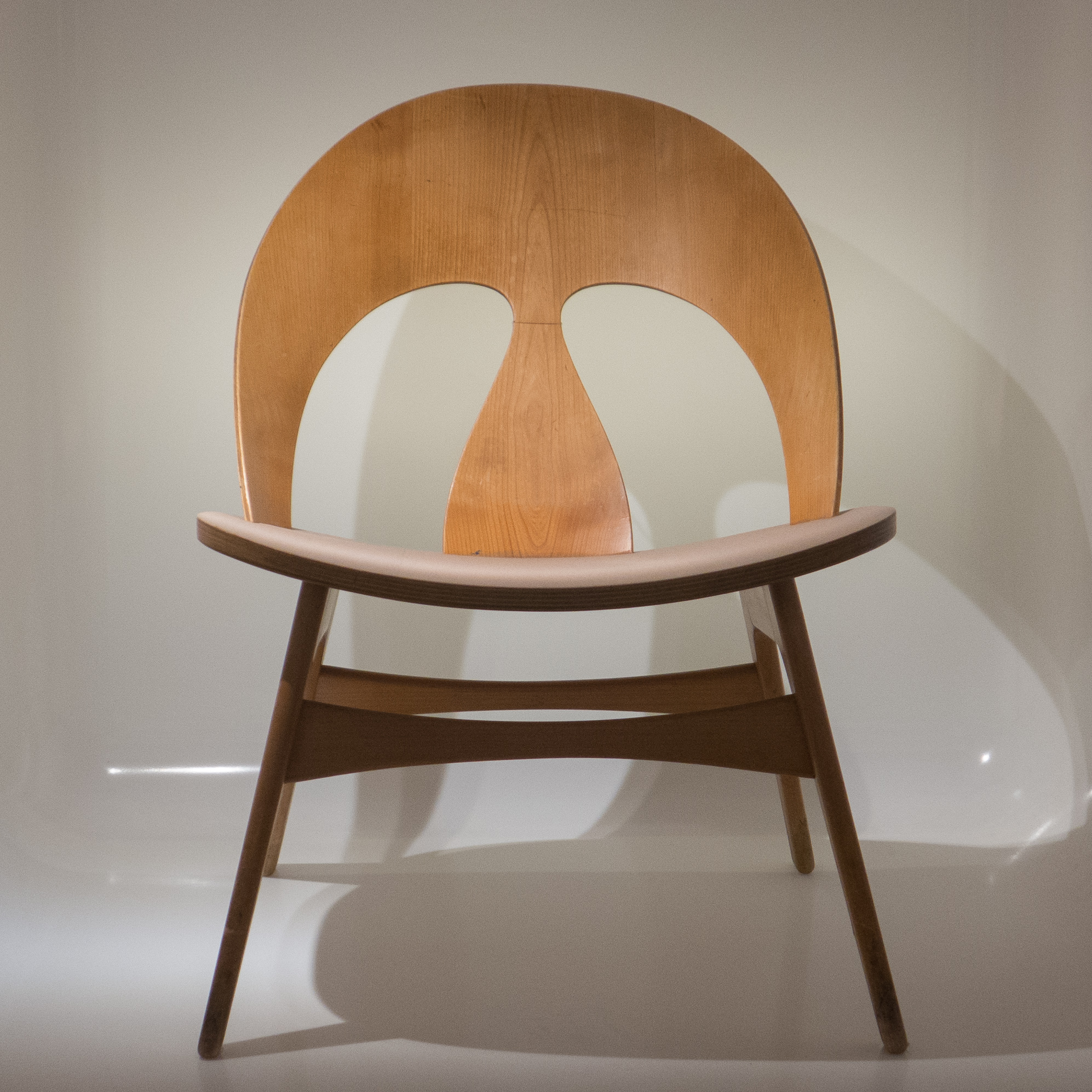chair by Søren Hansen 1943
/chair in Designmuseum Danmark
From the late 1920s and through into the 1940s, the furniture manufacturer Fritz Hansen Etft experimented with new materials and tried out new manufacturing methods. They made chairs with frames in steamed and bent wood, producing several chairs based on chairs produced by Thonet in Austria from the middle of the 19th century with a bentwood frame for the seat and bentwood legs with a plain seat cut from plywood and without upholstery.
This chair, designed by Søren Hansen, uses plywood in a much more ambitious and much more obvious and prominent way.
The boldly-shaped back of the chair was cut from plywood and bent into a curve around the bentwood frame of the seat and then fixed in place with screws. It might appear to be rather crude in form and it looks as if it would spring apart or even collapse if you lent back in the chair but the design is relatively strong with the arm rests made from a single piece of bent wood that loops around behind the back to provide support.
Søren Hansen was a grandson of the founder of the furniture company and, with his brother, took over control of the company in the 1950s so it would seem that he took this interest in plywood or laminated wood forward so the shape of the plywood back should look vaguely familiar ..… surely this is an early version or a preliminary stage of a shape that was to develop ultimately into the more sophisticated and much more famous Chair 7 by Arne Jacobsen? The main difference is that the back of this chair by Hansen is curved in just one plane and it must have taken quite a few trials and experiments before the workshop could perfect the complex form of the later shell chairs that are curved in two planes to form a seat and back together in a single piece of plywood.
The year of the design also explains, in part, the reasons for the experiments with plywood and bentwood for making chairs. Through the Second World War, good high-quality timber for making furniture was scarce and of course the situation meant that most people were spending much less or no money on new furniture. But, actually, the war also saw rapid improvements in cutting and shaping plywood as it was used for building light-weight planes and boats with thin sheets of laminated wood pinned over a wood frame. Alvar Aalto had designed several chairs in the 1930s that used bent plywood but with the curves in a single plane … essentially a long scroll … but it was in the United States that the designers Charles and Ray Eames developed designs of shell-shaped chairs in plywood and plastic in the late 1940s and early in the 1950s.
designed by Søren Hansen (1905-1977)
made by Fritz Hansen Eftf
steam-bent arms and plywood seat and back ash
height: 86cm
width: 53cm
depth: 53cm






